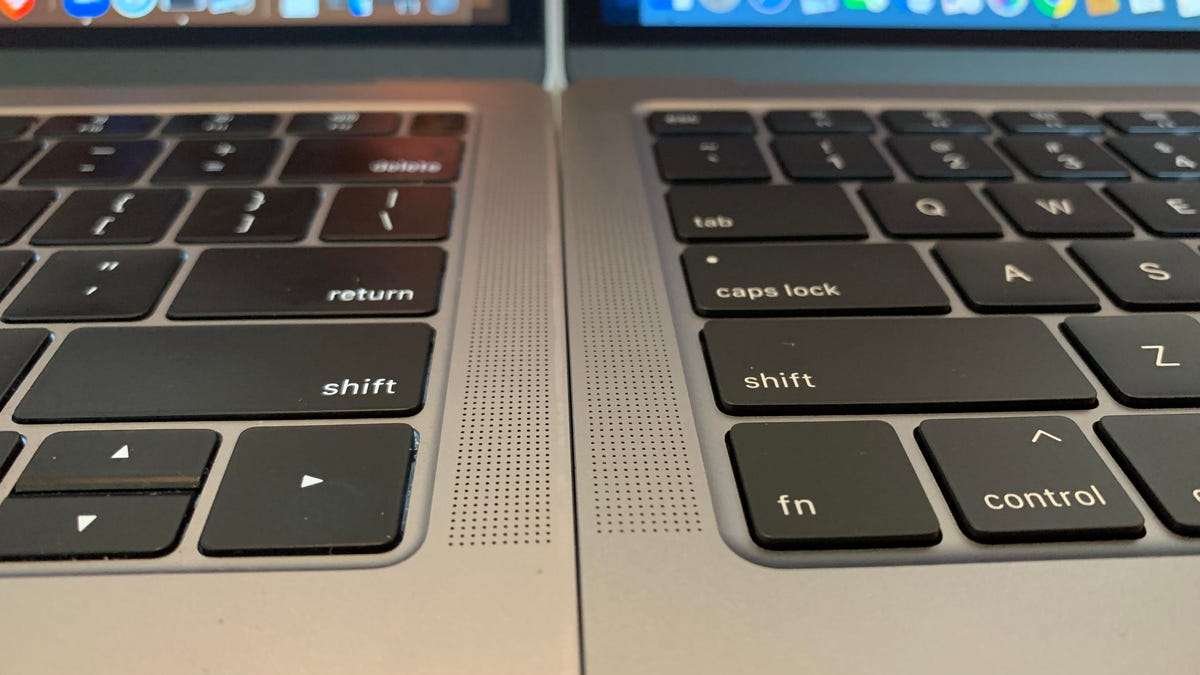Requiem for a butterfly keyboard
Commentary: Dear MacBook butterfly keyboard, we're all-in on the Magic now.

Butterfly versus Magic.
Perhaps the kindest thing we can say about the Apple MacBook butterfly keyboard is, "Thank you for your service." Yes, it helped introduce thinner, lighter, more portable MacBooks, but we can safely say the butterfly keyboard did not ever spark joy.
With the latest update to the 13-inch MacBook Pro, Apple is officially out of the butterfly keyboard business. The three main Mac laptops, the MacBook Air, 16-inch MacBook Pro and 13-inch MacBook Pro, all use the updated Magic Keyboard now, a major change from this time last year, when every MacBook included the much-maligned butterfly keyboard.
About a year ago, at the height of butterfly hysteria, when every shipping MacBook was saddled with one of these things, I launched a contrarian defense of the keyboard design. It was fairly tongue-in-cheek, although I may be retconning just how much so.
My point was, and remains, that it wasn't great, but it also wasn't as terrible as the online zeitgeist would have you believe. After all, I said: "People simply don't take to Twitter to report that their product is working as expected." Faint praise indeed, but the level of butterfly panic had risen to the level of torch-bearing villagers chasing down Dr. Frankenstein, when in fact most MacBook users had no serious keyboard troubles.
The first-gen butterfly keyboard from 2015.
I had extensively used, by my estimate, at least eight butterfly keyboard MacBooks over the past few years, and only had a single serious stuck key issue on one of them, which I fixed myself by turning it upside down and fidgeting with the key. That's not to discount the many serious problems consumers did have, nor the lawsuits, the repair policy updates and the miserable feeling of paying top dollar for a premium product that just doesn't live up to its promise.
The worst version of this butterfly keyboard was the initial one in the 2015 12-inch MacBook. The keys had no bounce, but the 12-inch MacBook was such a great idea, I was willing to take the keyboard along with it. It's rarely acknowledged, but the butterfly keyboard evolved over time, getting better with each incarnation. The best version was the mid-2018 update, which put a rubber membrane under the keys. That kept debris out and gave the keys just a hint of added bounce. If the butterfly keyboard launched like that back in 2015, I bet we'd think much differently about it.
Laptops fit a tremendous amount of technology and power into a very small space. Shoppers, and yes, reviewers, are always asking for more battery life and more powerful processors. That requires physically larger batteries and enough room for fans and cooling chambers. At the same time, we demand ever thinner, lighter laptops. Something has to give, and keyboards may have seemed like a good place to shave a few fractions of a millimeter. Narrator voice: It wasn't.
The argument is largely academic now. Instead of continuing to refine the butterfly keyboard, Apple has sent it to the same farm upstate where the 12-inch MacBook, 11-inch MacBook Air, MagSafe connector and other retired devices and technologies live.
It's for the best. Having used the new Magic Keyboard design in the 16-inch MacBook Pro, MacBook Air and now the 13-inch MacBook Pro, it's a huge improvement. When I first started using it on the 16-inch Pro in late 2019, my initial thought was, "Where the f*** has this been for the last four years?"
The current Magic Keyboard design.
Maybe the butterfly keyboard troubles were our own fault -- user error is often blamed for products that don't work like we expect. If only we didn't insist on eating over our keyboards, where errant crumbs could lodge themselves in the tiny spaces under keys. If only we could be happy with the barely there click of a super-shallow keyboard, instead of insisting on the satisfying clack of key travel. But we're not robots. We do eat around our laptops. We do want to feel what we're typing while we type it.
Arthur C. Clarke said, "Any sufficiently advanced technology is indistinguishable from magic." Maybe the same can be said for good keyboard engineering.

